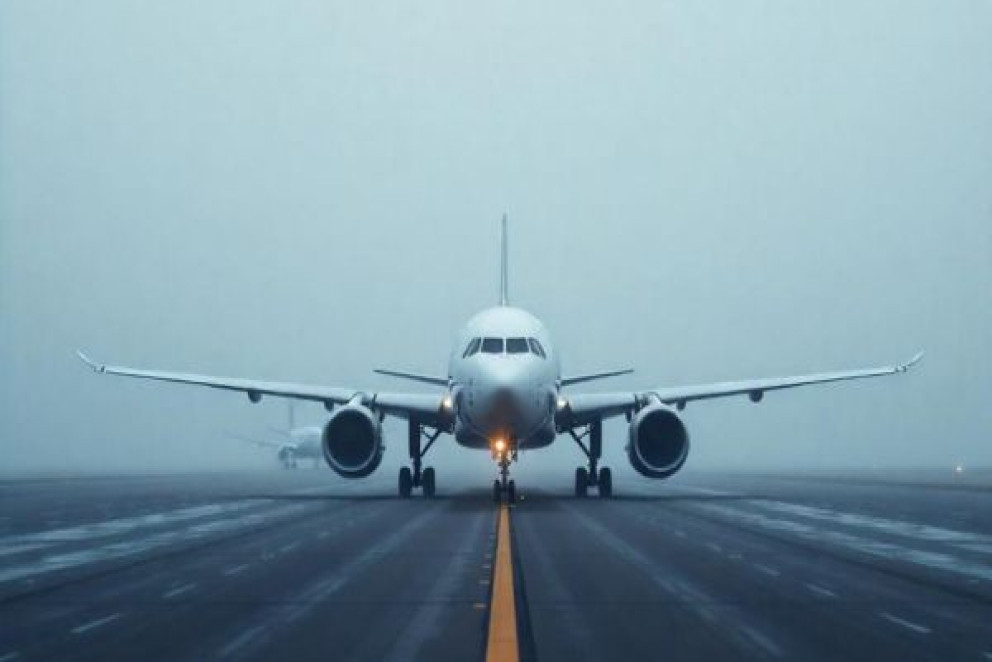Blog Details

1600-year-old unique Roman indoor swimming pool with frescoes discovered
As per the latest development, archaeologists in the Albanian port city of Durrës have unearthed a remarkable find: a 1600-year-old Roman indoor pool, a rarity in the region. If reports are to go by, this discovery occurred during excavations for a future school building, where Albanian archaeologists stumbled upon the remnants of ancient villas once inhabited by Roman elites.
Among these villas was one containing the indoor pool, but that was not the only remarkable discovery. The entire enclosure was adorned with Roman mosaics, remarkably preserved despite the passage of almost two millennia.
Durrës stands as Albania’s oldest economic and historic hub, serving as a permanent bridge between the East and the West. Originally known as Epidamnus by the Illyrians in the seventh and sixth centuries BC, the city was colonized by the Greeks in 672 BC, who named it ‘Dyrrhachium’ or ‘The city between the two hills.’
The Romans took control of the city around 230 BC. Catullus, the Roman historian, referred to the city as ‘Dyrrhachium Adria e Taberna,’ or ‘The Adriatic Tavern.’ Cicero, who sought refuge in Durrës circa 57 BC, described it as ‘admirable,’ largely due to its vibrant and lively atmosphere.
The recent discovery astonished even the seasoned archaeologists of Durrës, who are accustomed to Roman remains. Prior to the construction of a school, excavations in Durrës revealed an aristocratic ancient Roman neighbourhood, as detailed in a May 9 Facebook post from Albania’s National Institute of Cultural Heritage.
Covering an area of 1,200 sq m, the archaeological excavations have offered a unique glimpse into the urban layout of the area, believed to be a part of the city. Among the ruins of an ancient Roman villa were traces of an indoor pool adorned with well-preserved mosaics.
The excavations revealed the remains of an indoor swimming pool within a Roman period residence, the first of its kind discovered in Albania. Its entire surface is adorned with vibrant frescoes of remarkable artistic quality, highlighting the exceptional preservation of the mosaic floor featuring geometric motifs crafted from marble, stone, glass, and ceramic tiles.
Archaeologists estimated that the Roman ruins dated back to between 1 and 400 AD, making them at least 1,600 years old. Excavations at another part of the site unveiled numerous walls and a substantial brick floor believed to be remnants of a two-story ancient Roman bathhouse. Additional fragments of walls, ceilings, and tile mosaics were also uncovered.
Excavations at the construction site are ongoing, promising further insights into Durrës’ rich history.
Among these villas was one containing the indoor pool, but that was not the only remarkable discovery. The entire enclosure was adorned with Roman mosaics, remarkably preserved despite the passage of almost two millennia.
Durrës stands as Albania’s oldest economic and historic hub, serving as a permanent bridge between the East and the West. Originally known as Epidamnus by the Illyrians in the seventh and sixth centuries BC, the city was colonized by the Greeks in 672 BC, who named it ‘Dyrrhachium’ or ‘The city between the two hills.’
The Romans took control of the city around 230 BC. Catullus, the Roman historian, referred to the city as ‘Dyrrhachium Adria e Taberna,’ or ‘The Adriatic Tavern.’ Cicero, who sought refuge in Durrës circa 57 BC, described it as ‘admirable,’ largely due to its vibrant and lively atmosphere.
The recent discovery astonished even the seasoned archaeologists of Durrës, who are accustomed to Roman remains. Prior to the construction of a school, excavations in Durrës revealed an aristocratic ancient Roman neighbourhood, as detailed in a May 9 Facebook post from Albania’s National Institute of Cultural Heritage.
Covering an area of 1,200 sq m, the archaeological excavations have offered a unique glimpse into the urban layout of the area, believed to be a part of the city. Among the ruins of an ancient Roman villa were traces of an indoor pool adorned with well-preserved mosaics.
The excavations revealed the remains of an indoor swimming pool within a Roman period residence, the first of its kind discovered in Albania. Its entire surface is adorned with vibrant frescoes of remarkable artistic quality, highlighting the exceptional preservation of the mosaic floor featuring geometric motifs crafted from marble, stone, glass, and ceramic tiles.
Archaeologists estimated that the Roman ruins dated back to between 1 and 400 AD, making them at least 1,600 years old. Excavations at another part of the site unveiled numerous walls and a substantial brick floor believed to be remnants of a two-story ancient Roman bathhouse. Additional fragments of walls, ceilings, and tile mosaics were also uncovered.
Excavations at the construction site are ongoing, promising further insights into Durrës’ rich history.
Source: Times Of India



